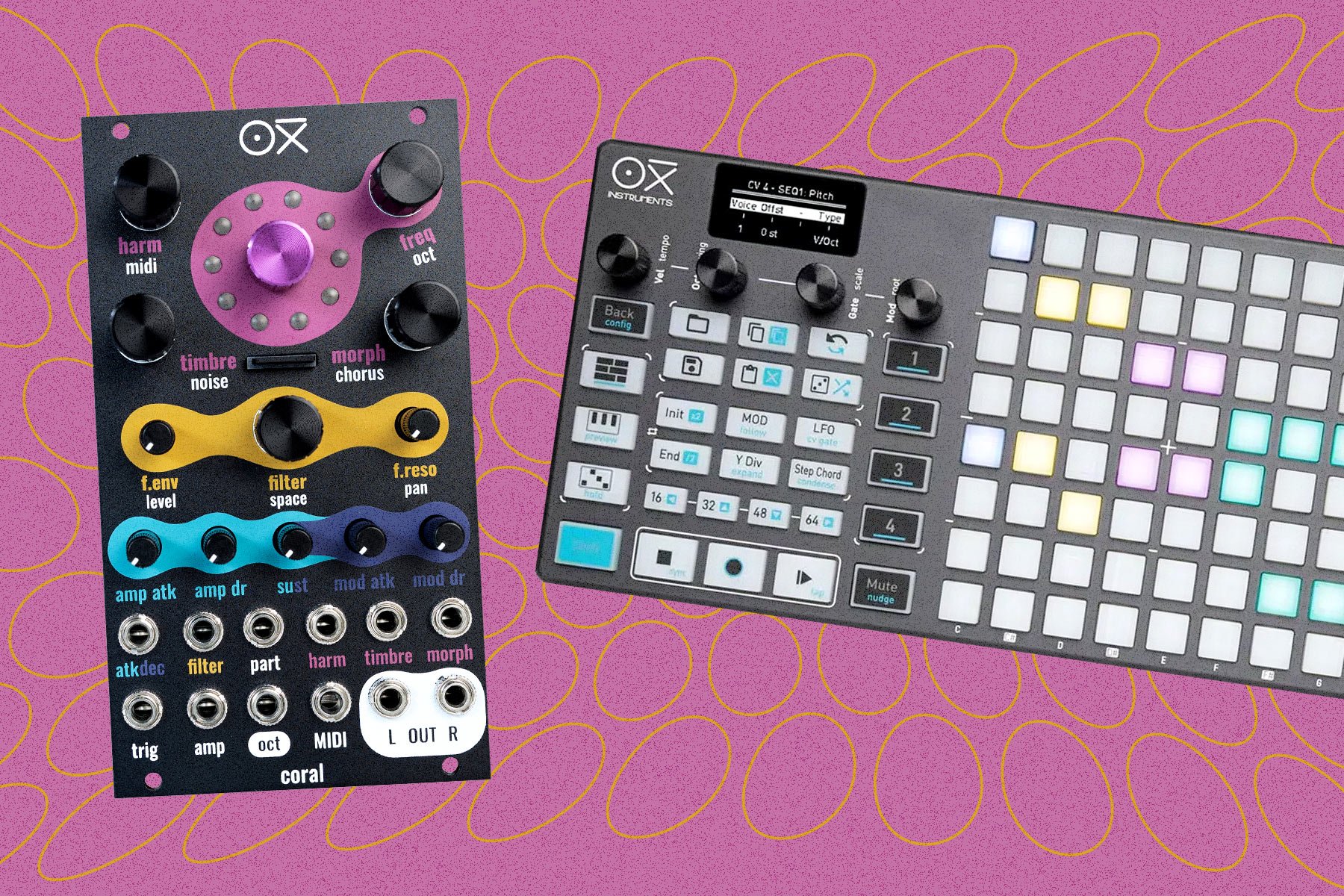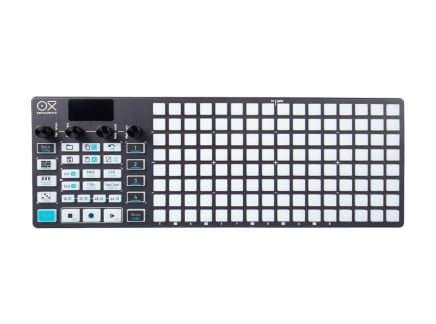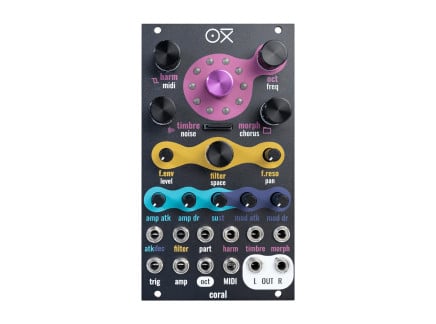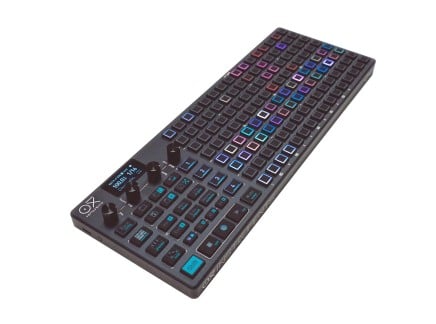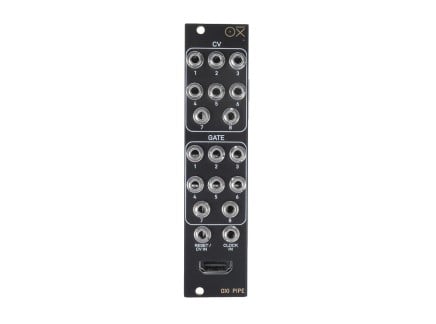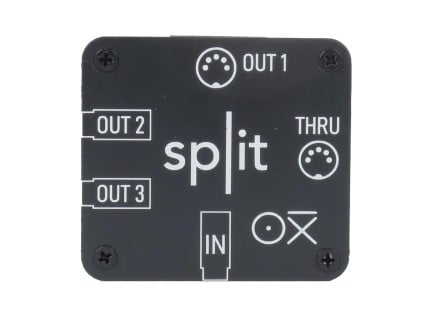For anyone interested in hardware for making electronic music, there’s certainly no shortage of options. Musical devices are more powerful than ever, and it’s an exciting space for challenging the conventional notions of what music can sound like or how it can be performed.
But there’s a funny and wonderful thing about music hardware—unlike a traditional instrument such as a guitar or piano, a lot of devices are purely designed for the purpose of generating sounds or telling others how to make sounds. As such, there can be a lot of modularity with mixing and matching synthesizers and controllers, and we think this is a great thing! You might come up with completely different ideas on the same synth when it’s connected to a MIDI keyboard controller as opposed to a step sequencer.
If you’ve been keeping track of interesting controller or sound module developments over the past few years, there’s a good chance you’ve heard of OXI Instruments. The potent pairing of their ONE CV and MIDI sequencer with Coral, a multipart and multitimbral MPE-capable Eurorack module, is incredibly capable and astonishingly compact. The compatibility of both with larger modular systems and other MIDI instruments and controllers also leaves a ton of room to expand and explore vast sonic possibilities.
Just like many of you, the staff here at Perfect Circuit have become totally enamored with OXI Instruments. We thought it might be a good idea to connect with Manuel, the main man behind designing and developing OXI Instruments, and pitch him some questions about his incredible (and ongoing) work. Discussing everything from his background to engaging with folks passionate about his products, Manuel gave us some lovely insights about the past, present, and future of OXI Instruments.
Interview with Manuel from OXI Instruments
Jacob Johnson: Hi Manuel, thanks so much for taking the time to chat with us! Let’s start by talking a little bit about your background: how did you get into electronic music?
Manuel @ OXI Instruments: I started making music in 2014 with Logic Pro. I had to stop doing my favorite sports due to several physical problems, and I gave music production a try. They were rough times but I got hooked on making tunes pretty quickly. I learnt synthesis, music theory, I read mixing books and tried to learn everything as fast as possible. I got better at it quite fast and it was really satisfying!
However my real first contact with music production was around the 2000's, with a music software that came for free with the Golden Grahams flakes. It consisted of building songs with audio loops. I spent quite a few hours with them, it was a pity not knowing by then a more powerful software!!
Btw, my first MIDI controller was an AKAI LPK25 :)
JJ: What was your path toward designing your own instruments and devices? Where did you develop the skills needed to craft such powerful electronic instrument hardware?
Manuel: It was a combination of a couple of things. First one was trying to put together our first live set for Occipital (alias for myself and my friend Aaryon duo). We purchased a couple of devices but they were not clicking with us.
By that time I also was giving some music production lessons and I found the students struggling with the Piano roll of Ableton to create their own melodies.
On the other hand, I was working as an automotive embedded engineer and I wanted a change in my career. I had some savings that allowed me to quit and I went for it.
[Above: Early prototypes of ONE. Images via OXI Instruments]
JJ: Before we get into your products, let's talk about OXI Instruments as a company. OXI began not in a bustling city, but rather a small village. Of course, the world is incredibly connected through the internet, but does your location offer any unique benefits or challenges in designing or manufacturing products?
Manuel: I would say the only benefit was that it is a cheap place to live and that made it possible for me to spend almost 2 years in the project “unemployed”. OXI company would probably be very different if it was born in a City like Madrid, Berlin or Barcelona.
JJ: OXI is a small team, and it's clear that you wear several different hats as product designer and firmware engineer, while also engaging with the growing community of users. How do you balance all of these different roles? When do you turn to someone else's expertise to keep things moving?
Manuel: That’s a good question that I find hard to answer. I think the great part of my job is that I can do many different things. It’s obvious I spend a lot of time working but swapping tasks keeps it refreshing and very entertaining.
For example, I enjoyed improving my Illustrator skills a lot. More recently, I started working with a different PCB design software, Altium, which was a tough beginning because it is hard to learn but in the end it was worth it and helps in many aspects.
So I don’t see myself delegating much unless in very specific areas. We have though hired a new person to make video tutorials and improve the users' support in our communities. And I have to take this opportunity to thank everyone that has helped other users in our forum, discord and facebook group. And also another person part time to improve marketing wise in all fronts.
JJ: Your first product was the ONE, a compact and very capable MIDI and CV sequencer—and it quickly became a hit! For readers who may be learning about it for the first time, how would you describe ONE? What type of musician do you think would get the most value out of ONE?
Manuel: The OXI One is a very fun machine, and with the latest updates, more than ever. It has many sweet spots and offers different ways of using it.
It can give life to small and big modular systems. It is always for me a better way of sequencing external MIDI gear, rather than using their internal sequencers for example. And it can glue together many different instruments from different manufacturers and make them work like one bigger instrument. Since it is very portable, you can use it with your computer, iPad, etc. as well.
I am genuinely happy with it when I do my own jams and I finally see myself doing a live set with it and our current and upcoming products.
I can’t think of a musician who wouldn’t enjoy the OXI One. However, being versatile and powerful means it is also a deep device, and that may not be for everyone.
JJ: There are a lot of grid-based sequencers and instruments out there. Grid controllers in electronic music have a fascinating history, with a lot of iteration on gestural and interactive concepts. What did you want to do differently with ONE? Were there any unexpected influences while you were designing ONE?
Manuel: I was thinking about this the other day. How is it possible that we are competing with so many great products? And I think I replied to myself when I was jamming with it last Friday.
I think the key is having direct access to the important things, having a straightforward way to program sequences, different sequencing modes each one tailored for its own task... It has a broad range of randomization and modulation tools. An easy way to set up things without losing control over your setup.
The UI has been streamlined a lot and I have made sure that most of the gestures you would expect to work, they do.
JJ: We really admire your continued development of the ONE—adding powerful new features with impressive regularity. How do you balance adding more advanced features (like the Matriceal sequencer mode introduced with firmware V3.0 and Snapshots in V4.2) while keeping the ONE as immediate and intuitive as possible? Do you ever have ideas that ultimately do not become part of a firmware update?
Manuel: It takes a lot of brainstorming (from myself and contributors of the community) and a lot of happy ideas.
For example the Snapshot implementation was a happy idea. We ran out of buttons but I found a nice button combination that made quite a lot of sense.
Additionally, the interface has been highly streamlined during this time, becoming more fluent and making room for new features.
Another example is the external mappings which are a great tool to complement the interface with external MIDI controllers, exposing all the parameters of the OXI One for immediate control from the outside.
Regarding the second question, I have a huge list of ideas and features that haven’t been yet implemented. But with many of them I feel like I would need to spend much more time than the feature is worth it.

JJ: OXI also offers a few breakout accessories for ONE: Pipe and Split. How do these change up the ONE workflow or make things easier for the user?
Manuel: The Split was the result of my willingness to offer more MIDI outputs. I could have managed to have two ports in the OXI One itself, but that wouldn’t be really enough either for bigger setups. So that’s why thanks to the Split you can have 2, 3 and maybe more in the future MIDI outputs with different connection formats. Furthermore, if you want to take the OXI One with you, you can leave the Split in your studio and you would only need to disconnect a single cable.
Same applies to the Pipe. It’s the best convenient way to connect your OXI One to your eurorack system. Otherwise you would have to repatch 16 cables every time you had to carry your setup elsewhere!!
JJ: Let’s turn our attention to Coral now, which is a powerhouse of a Eurorack module. Tell us about Coral’s design process. What led you to design such a feature-packed Eurorack module?
Manuel: The main reason was missing polyphonic synths in Eurorack. That said, and considering I love the sound of Plaits, I also missed two things: more specific control of the envelopes, a dedicated filter control and the possibility of using the engines independently. This last point is what led me to make Coral multitimbral and multipart.
Just to clarify, in my way of thinking about these terms. Multitimbral means that different voices can play different sounds. And Multipart means that different voices can be played or used independently of others.
JJ: Your website mentions that some of Coral’s engines are based on the beloved Mutable Instruments Plaits. How did you choose which ones to include in Coral, and how did you expand on the original code? What parts of Coral are totally new and unique?
Manuel: Basically I chose the ones that were more suitable for polyphonic sounds and the engines I liked to play some of my drums in eurorack. I used some oscillator classes from mutable to create new engines like the MDO (which is 8 detuned oscillators per voice) and the 3VCO moog style engine, For the wavetable I set a requirement that the users could change the wavetable and even create their own ones, so I had to rebuild it. I also added the harmonic oscillator with distortion which can sound from very mild to quite harsh. And now we are going to release the second version of the ACID engine (2.0 firmware) which incorporates accents, glides and a pretty good distortion and raver sound.
Coral also has presets, built in effects like reverb and delay (2.0 firmware) and a full MIDI implementation that interacts well with the CV inputs.
The multitimbral and multipart logic and UI was also our invention and offers a convenient solution to create complex arrangements of voices within the minimalistic interface.

[Above: Coral's internal signal flow. Image via OXI Instruments]
JJ: Coral and ONE seem like an ideal match, but of course, you can use Coral with any MIDI controller or CV source. What is your favorite way to use Coral?
Manuel: When I want to make more conventional songs, I use it with MIDI and the OXI One. And if I want to add extra life to any of its sounds, I use modulation modules like Batumi.
But when I want to explore and go nowhere, I like to feed it with Varigate or Pam's Workout.
JJ: There’s a large variety of people using Eurorack modular synthesizers these days. What type of musician or style of patching do you think might benefit the most from using Coral?
Manuel: I would recommend it to different profiles of users. Eurorack newcomers, who can use it with MIDI or CV and get a lot of sounds from it. People looking for a great polyphonic synth. People who want to travel light and appreciate the possibility of getting a lot of different sounds from a small single module. And finally to people who would enjoy creating multitimbral patches for sound exploration.
JJ: Speaking more generally, what are your thoughts on MIDI and polyphony in Eurorack? Because Coral is so flexible not only as a sound source but as a MIDI/MPE/multitimbral instrument, we imagine you’re pretty excited by the possibilities! Where do you imagine polyphonic Eurorack modules going in the future?
Manuel: Everything I could have asked Coral has been added to it! Like MPE or a full-featured Delay effect!
But if I went very crazy, I would go for a better sampler with time stretch! Which would be amazing to play harmonies with one sample. Like the Ableton Simpler but with CV inputs! The current sample player allows to play chords with one sample but it is obviously not as flexible.
 Prototype of an upcoming OXI Instruments product, image via OXI Instruments
Prototype of an upcoming OXI Instruments product, image via OXI Instruments
JJ: Like ONE, Coral has seen a number of updates since it was released. For both devices, a lot of these updates were a result of requests and feedback from users. How do you weigh suggestions for their potential as feature additions or improvements in your products?
Manuel: It is a balance between suggestions I find instantly appealing and usable to me, and the effort to understand the needs of the users which sometimes explain use cases that I had never thought about but make total sense. I have learnt a lot since I started so by keeping myself humble I can continue to improve and learn from others as well as I do to our products.
JJ: What is your reaction to the passion and enthusiasm of folks around the world using your instruments?
Manuel: What I most appreciate is when they invest their time (sometimes a lot!) helping others, betatesting and suggesting features or improvements which are very aligned with the device.
JJ: Superbooth is just around the corner. Any hints about what we can expect from OXI in the future?
Manuel: I’m working on several projects at the same time, but for superbooth we have:
- Latest firmware updates of the OXI One. We’ll be highlighting those.
- Newer features of Coral with the new engines and improvements.
- A new performative effect eurorack module! Which makes playing with a live setup very enjoyable and handy for transitions.

